Bed Bug Bites
The dermatologists at Dermatology Associates & Surgery Center specialize in diagnosing and helping patients who are suffering from these reactions and rashes cause by bed bugs. Explore additional details below and schedule an appointment to confirm your diagnosis.
Examples of Bed Bug Bites
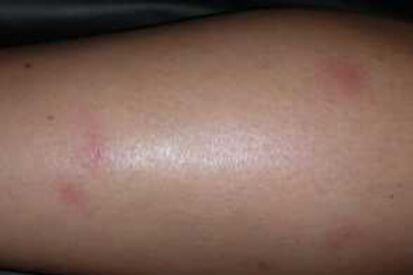
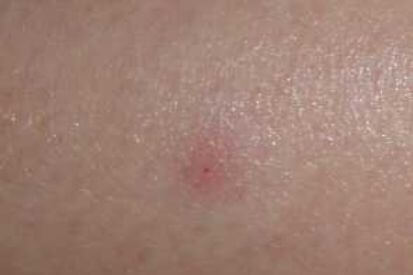
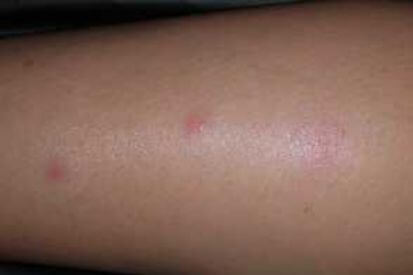
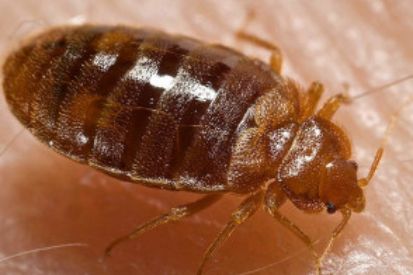

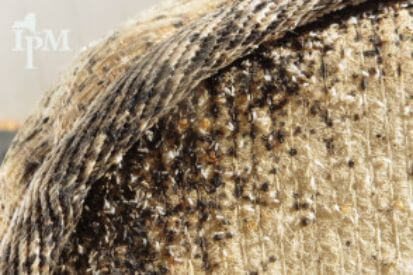
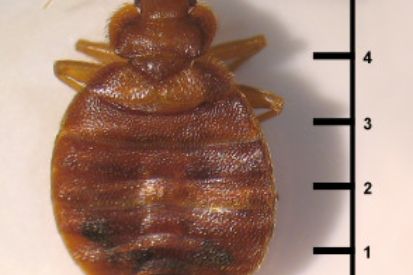
What are the Symptoms of Bed Bug Bites?
- Bed Bug Bites often provoke allergic reactions and rashes.
- Usually less than ¼” in size, can appear as flat or slightly elevated welts.
- Redness, swelling, and intense itching.
- Initially painless with skin’s reaction intensifying.
Causes of Bed Bug Bites
- Bed Bug Bites are caused by the feeding behavior of tiny, blood-feeding insects known as bed bugs (Cimex lectularius).
- Bed bugs like warm environments, like our beds. They hide in cracks and crevices during the day, emerging at night to feed on sleeping individuals.
- Bed bug infestations are not related to cleanliness or hygiene, as these insects are drawn solely to the warmth and carbon dioxide emitted by humans.
How to Prevent Bed Bug Bites
- Regular Inspection: Periodically inspect your living spaces, especially beds, mattresses, and furniture, for any signs of bed bugs. Look for tiny reddish-brown insects, shed skins, or small dark spots on bedding.Regularly Wash Sheets and Linens: Wash sheets, pillowcases, and other bedding regularly in hot water to eliminate any potential bed bug presence and keep your sleeping environment clean.
- Protective Covers: Consider using protective covers on mattresses and pillows to create a barrier against bed bugs. Ensure these covers are designed to be bed bug-proof.
- Travel Caution: Be cautious when traveling and staying in accommodations other than your home. Check mattresses, headboards, and nearby furniture for signs of bed bugs before settling in.
- Secure Luggage: When traveling, use luggage racks rather than placing bags on the floor or bed. Upon returning home, inspect and clean luggage thoroughly.
Bed Bug Bites FAQs
Bed bug bites often appear as small, red welts or bumps that are typically itchy. They may be clustered together in a specific area and might have a red halo around the center. Bed bug bites can resemble other insect bites or skin conditions, so it's essential for a dermatologist to assess the bites for a proper diagnosis.
While itching is a common symptom of bed bug bites, not everyone may experience itching. Individuals have different levels of sensitivity to insect bites, and some may not react as strongly as others. Additionally, the severity of the reaction can vary from person to person. Some people may have a more significant itch or rash, while others may have a milder reaction or none at all.
The duration of bed bug bites can vary among individuals. In general, the itching and redness associated with bed bug bites may last for a few days to a couple of weeks. Healing time can depend on factors such as an individual's sensitivity to bites, the extent of the bites, and whether there is excessive scratching. If symptoms persist or worsen, it's advisable to consult with your dermatologist for further evaluation.
In most cases, bed bug bites do not cause scarring. However, if an individual scratches the bites excessively, it can lead to breaks in the skin and increase the risk of scarring. To minimize the risk of scarring, it's important to avoid scratching and to follow proper wound care practices. If there are concerns about scarring, a dermatologist can provide guidance on scar prevention and treatment.
Seek dermatological care for bed bug bites if you experience severe allergic reactions, signs of infection, persistent discomfort, or if you're unsure about the cause of the skin irritation. Otherwise, basic care for the bites can usually be managed at home. Additionally, it's crucial to address the underlying bed bug infestation by contacting a pest control professional.
Treatment for Bed Bug Bites
Additionally, it's crucial to resist the urge to scratch the affected area, as scratching may worsen the irritation and potentially lead to skin breakage, increasing the risk of infection. By avoiding scratching, you allow the skin to heal more effectively and reduce the likelihood of complications.
In cases where bed bug bites result in a skin infection, your dermatologist may prescribe antibiotics to address the bacterial issue. This step becomes essential if there's redness, warmth, swelling, or pus at the bite site—indications that an infection may be present.
You are encouraged to consult with a skin expert who can assess the severity of the bites and recommend suitable treatments. By combining topical creams, responsible skincare practices, and, if necessary, antibiotics, individuals can effectively navigate the aftermath of bed bug bites and promote a faster and more comfortable recovery.
Featured Products

Pinnacle Skin Care Benzoyl Peroxide 5% Wash
This wash thoroughly cleanses acne-prone skin with a special soap-free cleanser and is fortified with benzoyl peroxide USP, 5% for anti-bacterial protection. 6.7 fl oz / 200 mL

ZO® Gel Sunscreen Broad-Spectrum SPF 50
A clear and unscented gel sunscreen with a complexion-smoothing finish for all skin tones. Exclusive antioxidant + plant stem cell complexes minimize the aging effects of environmental aggressors. Water and sweat resistant up to 40 minutes. Fragrance-free. 45 g / 1.6 Oz.
